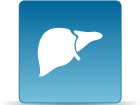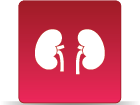2,4,6-Trinitrotoluene (TNT)
CASRN 118-96-7 | DTXSID7024372
- IRIS Summary (PDF) (14 pp, 118 K)
Noncancer Assessment
Reference Dose for Oral Exposure (RfD) (PDF) (14 pp, 118 K)
Last Updated: 09/26/1988
| System | RfD (mg/kg-day) | Basis | PoD | Composite UF | Confidence |
|---|---|---|---|---|---|
| Hepatic | 5 x 10-4 | Liver effects |
LOAEL
: 5 x 10-1 mg/kg-day |
1000 | Medium |
Reference Concentration for Inhalation Exposure (RfC) (PDF) (14 pp, 118 K)
Not assessed under the IRIS Program.
Cancer Assessment
Weight of Evidence for Cancer (PDF) (14 pp, 118 K)
Last Updated: 06/01/1989
| WOE Characterization | Framework for WOE Characterization |
|---|---|
| C (Possible human carcinogen) | Guidelines for Carcinogen Risk Assessment (U.S. EPA, 1986) |
- Evidence of human carcinogenicity is inadequate. Urinary bladder papilloma and carcinoma were observed in female Fischer 344 rats. Mutagenic activity was observed in Salmonella with and without metabolic activation.
- This may be a synopsis of the full weight-of-evidence narrative.
Quantitative Estimate of Carcinogenic Risk from Oral Exposure (PDF) (14 pp, 118 K)
Oral Slope Factor:
3.0 x 10 -2 per mg/kg-day
Drinking Water Unit Risk:
9.0 x 10 -7 per µg/L
Extrapolation Method:
Linearized multistage procedure, extra risk
Tumor site(s): Urinary
Tumor type(s): Urinary bladder, transitional cell papilloma and transitional squamous cell carcinomas (U.S. DOD, 1984a)
Quantitative Estimate of Carcinogenic Risk from Inhalation Exposure (PDF) (14 pp, 118 K)
Not Assessed under the IRIS Program.
- Human Health Benchmarks for Pesticides (HHBP). This database provides human health benchmarks for pesticides that may be present in drinking water.
- Office of Pesticide Programs Pesticide Chemical Search. This database provides links to health effects information and registration status for pesticides.
- Chemistry Dashboard. This database provides information on chemical structures, experimental and predicted physicochemical, and toxicity data.
You will need Adobe Reader to view some of the files on this page. See EPA’s PDF page to learn more.



